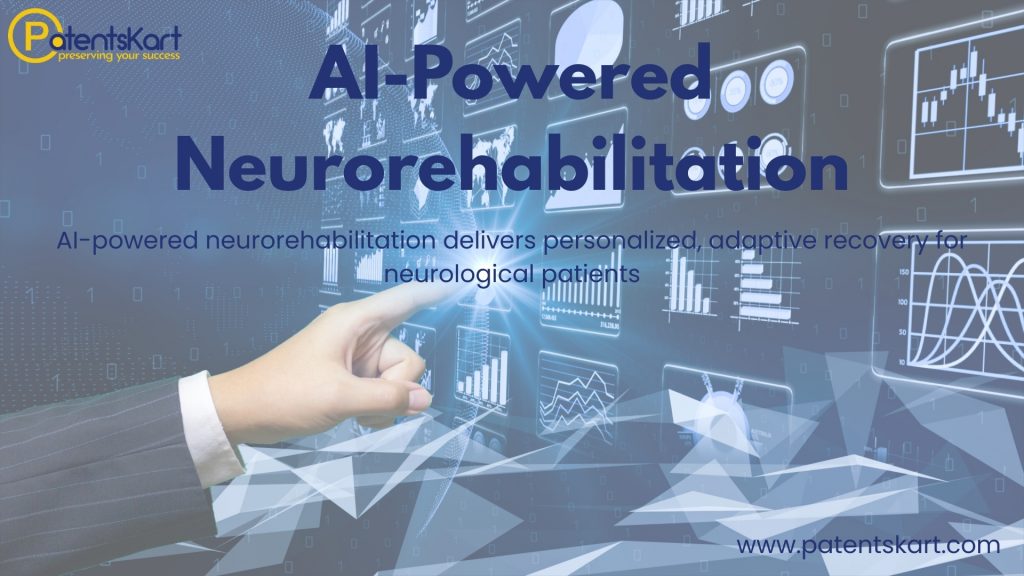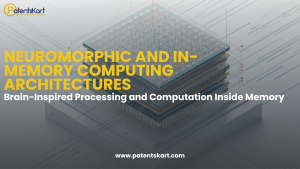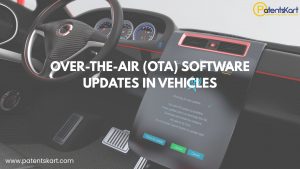What Is AI-Powered Neurorehabilitation and Why Is It Transforming Healthcare?
The healthcare industry is rapidly evolving, and one of the most transformative changes is happening in the field of AI-Powered Neurorehabilitation. This advanced approach is reshaping how patients recover from conditions like stroke, spinal cord injuries, and Parkinson’s disease. By combining artificial intelligence with robotics, brain-computer interface therapy, and digital health platforms, neurorehabilitation is becoming more precise, engaging, and effective.
In this blog, we’ll answer the most pressing questions about AI-Powered Neurorehabilitation, explore the role of patents, highlight key players (companies, startups, and universities), and examine future opportunities. Finally, we’ll discuss how PatentsKart can help you navigate this growing landscape.
What Is AI-Powered Neurorehabilitation?
AI-powered neurorehabilitation refers to the use of artificial intelligence, machine learning, robotics, and data analytics to help patients recover neurological functions. Unlike traditional therapy, which often relies on manual assessments and repetitive exercises, AI systems personalize treatment by analyzing brain signals, motion data, and physiological responses.
Key technologies include:
- AI rehabilitation devices – wearables, robotic exoskeletons, and stimulators that adjust in real-time.
- Brain-computer interface therapy (BCI) – allowing patients to control devices with thoughts.
- Robotic neurorehabilitation – adaptive robots that assist with motor tasks.
- Virtual reality platforms – gamified environments that make therapy more engaging.
- Predictive analytics – AI models that forecast patient recovery timelines.
This integration makes therapy more accurate, scalable, and motivating for patients.
How Does AI in Stroke Rehabilitation Work?
Stroke is one of the leading causes of long-term disability worldwide. Traditional stroke rehab is labor-intensive and limited by therapist availability. AI in stroke rehabilitation introduces a smarter approach:
- Wearables track movement: Smart sensors monitor gait, balance, and arm function.
- Robotic arms and exoskeletons: These devices provide physical support while adapting to patient progress.
- AI algorithms personalize therapy: Recovery plans are constantly updated based on patient performance.
- Gamification: Virtual reality games improve patient motivation and consistency.
- Tele-rehab: Remote platforms enable patients to access therapy at home.
This approach not only speeds up recovery but also reduces the burden on healthcare systems.
What Role Do Brain-Computer Interfaces Play in Neurorehabilitation?
Brain-computer interface therapy (BCI) is one of the most exciting areas in neurorehabilitation. BCIs decode neural signals and translate them into digital commands, allowing patients with severe disabilities to control external devices.
BCIs in neurorehabilitation can:
- Enable paralyzed patients to control robotic limbs or mobility devices.
- Provide neurofeedback therapy, where patients learn to train brain activity.
- Support personalized drug management for conditions like Parkinson’s.
- Help restore communication abilities in patients with speech impairments.
With companies like Synchron and research institutions like MIT and Johns Hopkins leading the charge, BCI-based rehab is moving closer to mainstream healthcare adoption.
Which Companies Are Leading AI-Powered Neurorehabilitation?
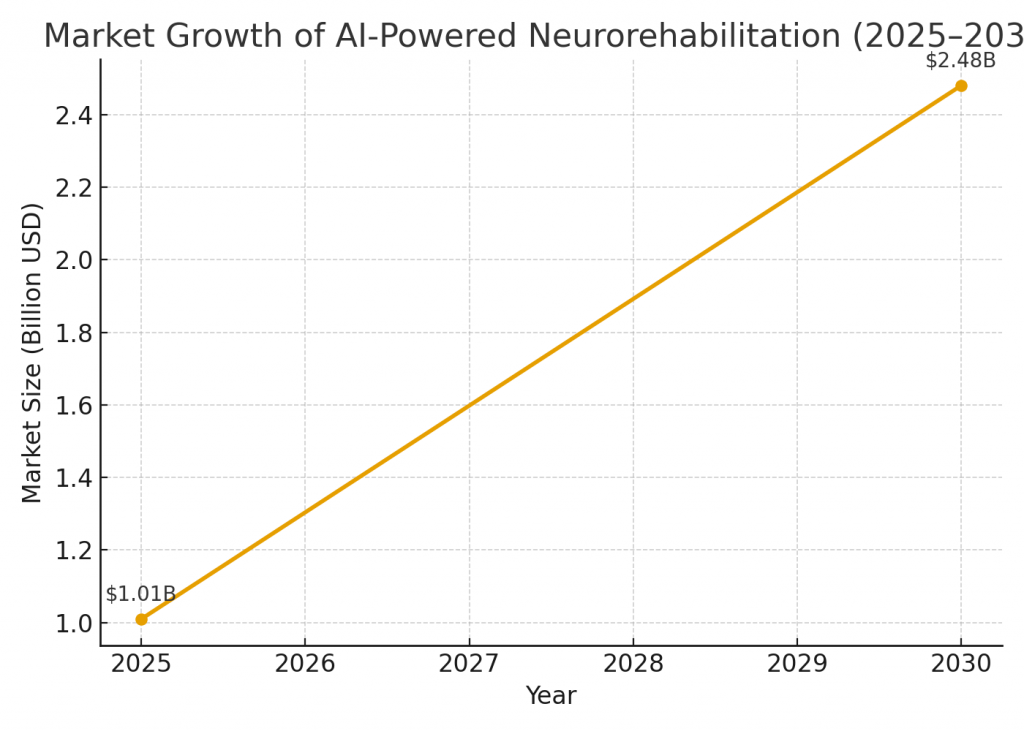
The market includes both large medtech companies and agile startups innovating at different levels:
Established Leaders
- Medtronic – Neuromodulation and robotic solutions.
- Novartis Pharma – AI-driven drug and rehab research.
- Ekso Bionics – Robotic exoskeletons for mobility rehab.
- ReWalk Robotics – Wearable robotic suits for spinal cord injury patients.
- MindMaze – Combining VR and AI for stroke and Parkinson’s therapy.
Startups Driving Innovation
- BrainQ – AI-based electromagnetic therapy to promote neuroplasticity.
- RecoverX – Exosuits powered by AI for real-time movement correction.
- Neurofenix – Gamified therapy devices for stroke recovery.
- Cognimate – Smart glove for personalized rehab.
- Neuron23 – Focused on Parkinson’s-specific therapies.
These players highlight the competitive and fast-growing digital neurorehabilitation market.
Which Universities and Research Labs Are Developing AI Neurorehabilitation?
Universities are critical drivers of innovation. Some of the leading institutions include:
- MIT – AI for health research, including partnerships with Takeda Pharmaceuticals.
- Stanford University – AI and neuroscience partnership grants.
- Oxford University – Artificial Intelligence in Stroke Neurorehabilitation (AISN) project.
- Johns Hopkins University – Work on BCIs and deep brain stimulation therapies.
- Simon Fraser University – Wearable AI for safer rehabilitation.
- McGill University – Spinal cord repair and neuroengineering research.
Labs such as the MIT-IBM Watson AI Lab and Carnegie Mellon BCI Lab are advancing the practical applications of AI-driven rehabilitation.
How Mature Is the Technology? (TRL & Patents)
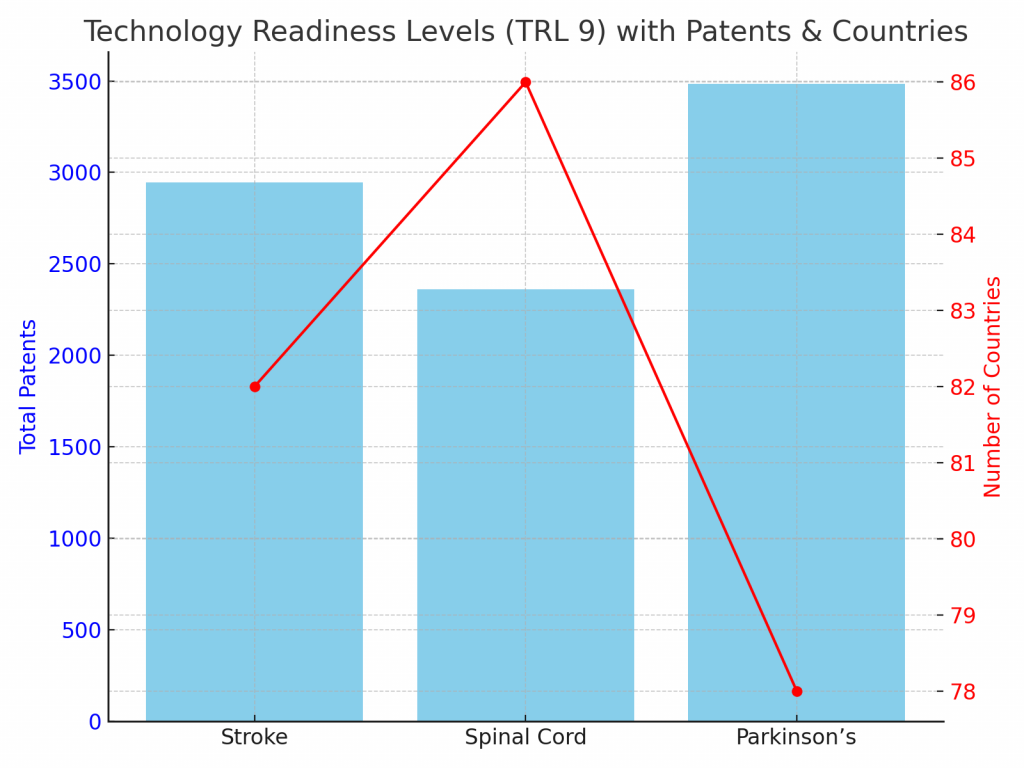
The report shows that AI-Powered Neurorehabilitation has reached TRL 9, meaning it is fully commercialized:
- Stroke rehabilitation – 2,946 patents across 82 countries.
- Spinal cord injury rehabilitation – 2,360 patents across 86 countries.
- Parkinson’s rehabilitation – 3,486 patents across 78 countries.
The high number of patents, wide geographic coverage, and decades of research indicate a well-established but still expanding market.
What Are the Benefits of Robotic Neurorehabilitation?
Robotic neurorehabilitation is one of the most practical uses of AI in therapy. Its advantages include:
- Consistent therapy delivery – robots don’t tire, ensuring repetitive and precise movements.
- Personalized adaptation – AI adjusts resistance and support levels dynamically.
- Faster recovery – clinical trials show 2–3x improvement in motor function recovery.
- Cost efficiency – reduces therapist workload and long-term care costs.
- Motivation – gamified tasks make therapy more enjoyable.
These benefits make robotics an essential part of future neurorehabilitation clinics.
What Challenges Does AI-Powered Neurorehabilitation Face?
Despite rapid progress, there are challenges:
- Data privacy – sensitive neurological data must be protected.
- Patient variability – outcomes can differ widely across individuals.
- Clinician resistance – adoption depends on training and trust in AI.
- Insurance coverage – reimbursement models for AI-driven therapy are still limited.
- High costs – advanced AI rehabilitation devices and robotic platforms require significant investment.
Addressing these barriers will be crucial for widespread adoption.
What Is the Future of the Digital Neurorehabilitation Market?
The future looks promising, with three key timelines:
- Short-term (1–5 years): AI-powered assessments, robotic rehab devices in pilot programs, and tele-rehab expansion.
- Medium-term (5–10 years): Predictive analytics, multimodal AI integration (wearables + robotics + EEG), and widespread home-based therapy adoption.
- Long-term (10+ years): Fully autonomous AI-driven rehabilitation ecosystems with virtual therapists and integration into national healthcare systems.
This progression aligns with global goals of digitized, affordable, and accessible healthcare.
How Can PatentsKart Help in AI-Powered Neurorehabilitation?
Navigating the fast-evolving AI-powered neurorehabilitation space requires deep expertise in patent landscapes, IP strategy, and competitive intelligence. This is where PatentsKart can add value:
- Patent Landscaping – Identify opportunities and monitor competitors.
- Freedom-to-Operate (FTO) Analysis – Ensure your innovation doesn’t infringe existing patents.
- Market & Technology Intelligence – Insights into TRL levels, startups, universities, and standards.
- IP Filing & Protection – Safeguard your neurorehabilitation inventions globally.
- Strategic Partnerships – Connect innovators with universities, labs, and startups.
By combining technical expertise with strategic IP services, PatentsKart empowers healthcare companies, startups, and researchers to succeed in the digital neurorehabilitation market.
Conclusion
AI-Powered Neurorehabilitation is no longer a futuristic idea—it’s a reality transforming healthcare today. From AI rehabilitation devices and robotic neurorehabilitation to brain-computer interface therapy and predictive analytics, this field is revolutionizing how patients recover from neurological conditions.
With strong patent activity, rising investment, and collaborations across companies, startups, and universities, the market is set to expand rapidly. For innovators, the opportunity lies in leveraging AI to make rehabilitation smarter, faster, and more human-centered.
PatentsKart stands ready to guide you through this landscape, ensuring your innovations are protected and positioned for global impact.
FAQs
1. What is AI-Powered Neurorehabilitation in simple terms?
It is the use of AI, robotics, and data analytics to personalize and improve rehabilitation for conditions like stroke, spinal cord injury, and Parkinson’s.
2. How does AI help in stroke rehabilitation?
AI in stroke rehabilitation uses wearables, robotics, and machine learning to monitor progress, personalize exercises, and speed up recovery.
3. What are examples of AI rehabilitation devices?
Examples include robotic exoskeletons, smart gloves like Cognimate, brain-computer interfaces, and VR-based therapy platforms.
4. Who are the top companies in robotic neurorehabilitation?
Major players include Ekso Bionics, ReWalk Robotics, MindMaze, Medtronic, and startups like BrainQ and RecoverX.
5. How can PatentsKart support companies in this field?
PatentsKart helps with patent landscaping, IP filing, freedom-to-operate studies, and market intelligence to protect and scale innovations in neurorehabilitation.

